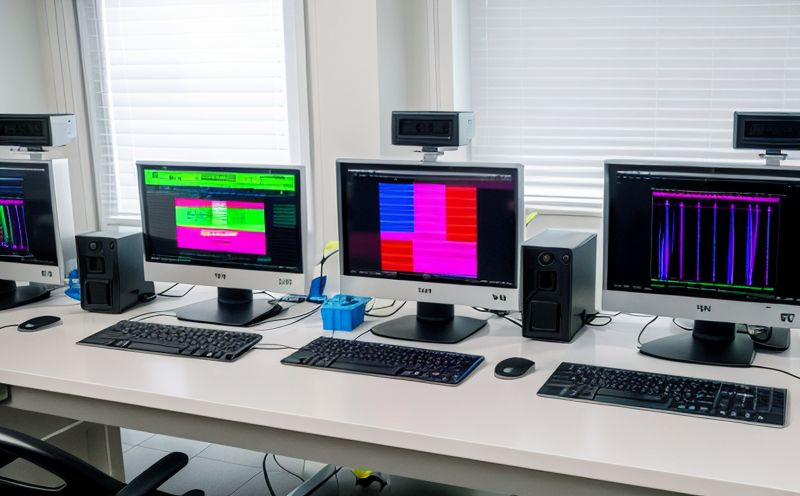AOAC 2012.07 Norovirus RT-PCR Detection in Food
The AOAC International method 2012.07 outlines a robust approach for detecting and quantifying noroviruses, which are the leading cause of non-bacterial gastroenteritis outbreaks worldwide. This method is particularly critical for food safety, as norovirus can be transmitted through contaminated foods.
The polymerase chain reaction (PCR) technique forms the core of this detection process. Real-time PCR utilizes fluorescent probes to monitor the amplification products in real time, allowing precise quantification and identification of noroviruses. The method targets specific regions of the virus's genome, ensuring high specificity and reliability.
The testing procedure involves several critical steps: sample collection, nucleic acid extraction, reverse transcription, PCR amplification, and data analysis. Sample preparation is paramount; it must ensure that the viral RNA is intact and free from inhibitors. This step often includes homogenization of food samples followed by filtration to remove particulates.
Once extracted, the RNA undergoes reverse transcription into complementary DNA (cDNA), which serves as a template for PCR amplification. The amplification reaction uses primers designed specifically for norovirus detection and fluorescent probes that bind to specific sequences within the target regions of the virus's genome.
The real-time PCR machine monitors the accumulation of amplified products by detecting fluorescence at each cycle, providing a real-time readout of the amount of viral RNA present. This allows for quantification down to very low levels, which is essential for ensuring food safety standards are met.
Data analysis involves comparing the amplification curve against standard curves prepared with known concentrations of norovirus cDNA. The final result indicates the presence and concentration of noroviruses in the tested sample. This method ensures high accuracy and precision, making it a cornerstone in the fight against foodborne illness caused by noroviruses.
Compliance with this method is crucial for ensuring product safety and meeting regulatory requirements set forth by various global health organizations. It helps companies maintain their reputation and trustworthiness, especially in sectors like food manufacturing and distribution where public health is paramount.
Why It Matters
The detection of noroviruses in food products can have significant implications for both the public and industry stakeholders. The emergence of norovirus outbreaks through contaminated foods has led to increased scrutiny from regulatory bodies, necessitating stringent testing protocols.
- Public Health: Noroviruses cause severe gastroenteritis with symptoms such as diarrhea, vomiting, nausea, and stomach cramps. Outbreaks can lead to significant public health impacts, including hospitalizations and increased healthcare costs.
- Regulatory Compliance: Regulatory bodies like the FDA and WHO have stringent guidelines for food safety that include testing for noroviruses. Non-compliance can result in product recalls and legal consequences.
- Corporate Reputation: Ensuring adherence to these standards helps maintain a company's reputation and trustworthiness among consumers, which is crucial for long-term success.
The importance of this method cannot be overstated. It plays a vital role in protecting public health by identifying potentially contaminated food products early on, thereby preventing widespread outbreaks. This proactive approach not only enhances safety but also fosters consumer confidence and trust.
Benefits
- Precision: Real-time PCR provides precise quantification of noroviruses down to extremely low levels, ensuring accurate results.
- Sensitivity: The method is highly sensitive and can detect even trace amounts of norovirus in food samples, making it effective for early detection.
- Specificity: Targeted primers ensure that the test specifically detects noroviruses without cross-reactivity with other pathogens.
- Rapid Results: The rapid nature of real-time PCR allows for quick identification and quantification, facilitating timely intervention measures.
The AOAC 2012.07 method is essential in maintaining high standards of food safety by providing reliable and accurate detection of noroviruses. This ensures that food products meet regulatory requirements and contribute to public health protection.
Customer Impact and Satisfaction
Implementing the AOAC 2012.07 method offers numerous benefits for customers, including enhanced product safety, improved compliance, and increased consumer trust. By detecting noroviruses early in the production process, companies can prevent contamination from reaching the market.
- Enhanced Safety: The method ensures that food products are free from harmful pathogens like noroviruses, thereby enhancing overall safety.
- Better Compliance: By adhering to stringent testing protocols, companies ensure compliance with international standards and regulations.
- Increased Trust: Providing safe and compliant products builds trust among consumers, leading to increased customer satisfaction and loyalty.
Customers benefit from a safer food supply chain, which is critical for maintaining public health and meeting regulatory requirements. This method not only protects the general population but also supports ethical business practices that enhance long-term success.





